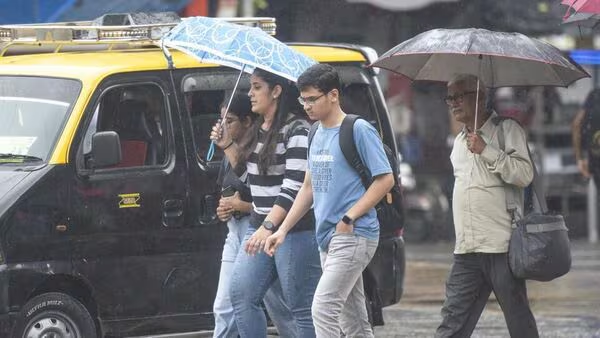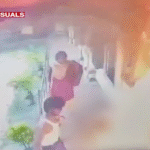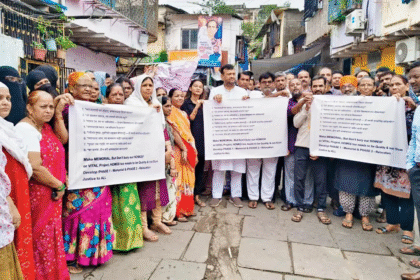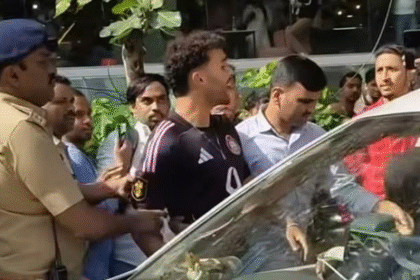Maharashtra Weather Alert: IMD Issues Red Warning for Raigad, Schools Shut in 6 Talukas Amid Heavy Rain
IMD has issued a red alert for Maharashtra’s Raigad district amid intense rainfall. Schools have been shut in 6 talukas as a safety measure. Stay updated on the latest weather developments and emergency precautions
Following intense overnight rainfall, the India Meteorological Department (IMD) has issued a red alert for Raigad district. In response, the district administration has declared a holiday for schools in six talukas as a precautionary measure.
All schools in the talukas of Tala, Roha, Pali, Mahad, Poladpur, and Mangaon have been declared closed today, Tuesday, as per the orders issued by District Collector Kishan Jawale.
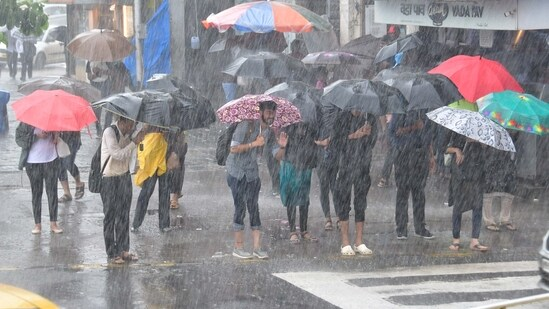
Meanwhile, the India Meteorological Department (IMD) Mumbai issued a nowcast warning at 10:30 AM on Tuesday, forecasting moderate spells of rain at isolated locations in the districts of Mumbai and Thane over the next 3–4 hours. Some areas may also experience thunder or lightning accompanied by gusty winds.
Residents have been advised to take necessary precautions while stepping outdoors. As per the latest data, Colaba recorded a minimum temperature of 25.0 degrees Celsius with 12.2 mm rainfall, while Santacruz registered 24.9 degrees Celsius and received 38.2 mm of rainfall.
The water levels in lakes supplying drinking water to Mumbai have risen following heavy rainfall in their catchment areas. According to Brihanmumbai Municipal Corporation (BMC) data, the combined stock in the seven reservoirs that provide water to the city now stands at 78.30 per cent.
As per BMC records on Tuesday (July 15), the collective water stock in these reservoirs is 11,33,347 million litres, which amounts to 78.30 per cent of their total capacity.
The BMC supplies drinking water daily from Upper Vaitarna, Modak Sagar, Tansa, Middle Vaitarna, Bhatsa, Vihar, and Tulsi lakes.
Of these, Tansa has 84.41 per cent water stock, Modak Sagar 100 per cent, Middle Vaitarna 94.16 per cent, Upper Vaitarna 77.51 per cent, Bhatsa 70.51 per cent, Vehar 50.57 per cent and Tulsi 52.01 per cent.
Lower (Modak Sagar), Middle and Upper Vaitarna lakes, along with Tansa, supply water to the western suburbs from Dahisar Check Naka to Bandra and to the western parts of the city from Mahim to Malabar Hill.
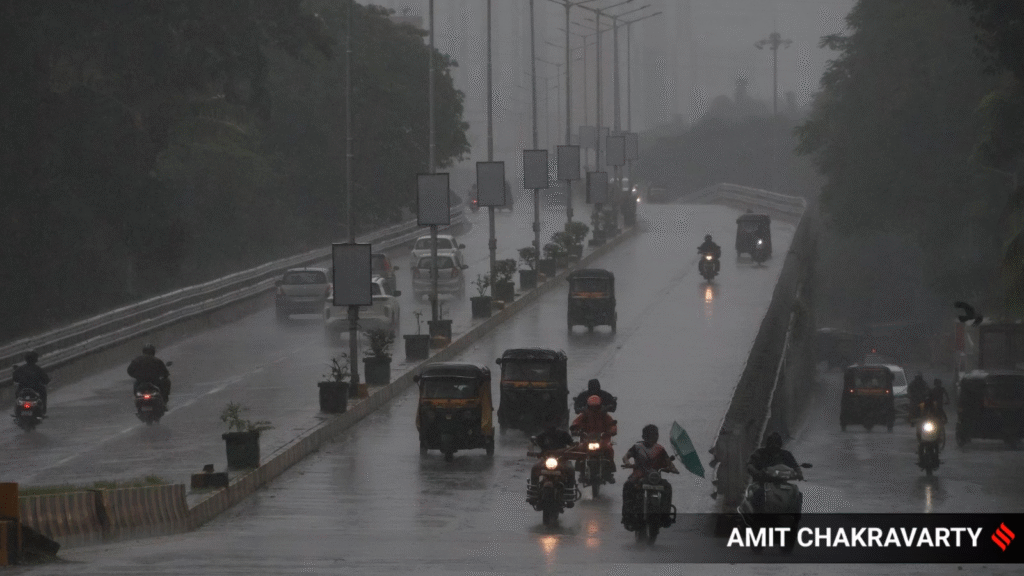
Maharashtra is reeling under the impact of relentless monsoon showers, as the India Meteorological Department (IMD) has issued a red alert for Raigad district, warning of extremely heavy rainfall in the coming 24–48 hours. In response to the alert, local authorities have announced the closure of schools and colleges in six talukas of the district on July 15 to ensure student safety.
The red alert—the highest in IMD’s three-tier warning system—indicates a high probability of “very heavy to extremely heavy rainfall” exceeding 204.4 mm in a day, which can cause flooding, landslides, waterlogging, and major disruption to daily life and essential services.
According to the IMD bulletin released late Monday night, Raigad has been experiencing an intense rain spell under the influence of a strong offshore trough along the Konkan coast and active monsoon conditions in the Arabian Sea. The rainfall intensity is expected to peak between July 15 and 16, with some isolated places likely to receive rainfall in excess of 250 mm.
The six worst-affected talukas where schools have been ordered shut are:
- Alibag
- Murud
- Roha
- Mangaon
- Mahad
- Poladpur
In a late-night order, the Raigad District Collector’s office said, “All government and private schools, colleges, and anganwadi centers in the listed talukas will remain closed on Tuesday, July 15, in view of the red alert and risk to student safety.”
The torrential downpour has already started to affect transportation and daily life. Local train services on the Central Railway were delayed due to waterlogging near Karjat and Panvel sections, while the Mumbai-Goa Highway has reported long snarls due to reduced visibility and pothole-ridden stretches.
Maharashtra State Road Transport Corporation (MSRTC) has issued advisories for commuters, especially those traveling to coastal and hilly areas in Raigad. Buses are being rerouted or canceled on a case-by-case basis to avoid routes prone to landslides and flash floods.
The Konkan Railway reported track patrols and maintenance teams on high alert, with special monitoring of vulnerable bridges and tunnels.
Several low-lying areas in Mahad and Roha talukas are already witnessing water accumulation due to back-to-back rainfall. Villages such as Borsewadi, Nagothane, and Kalamboli have reported partial flooding, with visuals showing knee-deep water in several households.
Residents have raised concerns over poor drainage systems and delays in cleaning nullahs before the monsoon. Authorities have deployed pumps in areas vulnerable to flooding, and local disaster response teams are on standby.
District Disaster Management Officer Ramesh Chavan said, “We are monitoring water levels in rivers like Savitri and Kundalika round the clock. We request citizens in vulnerable zones to remain indoors and contact helplines in case of emergencies.”
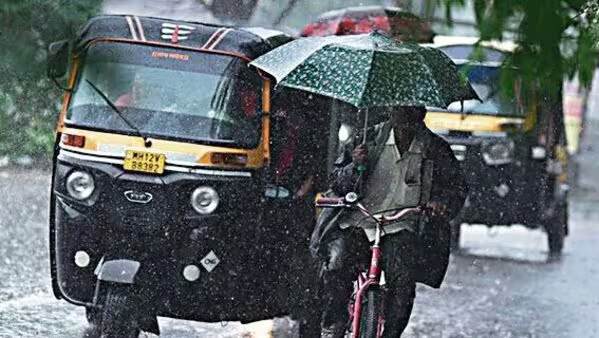
The IMD has warned that widespread rainfall will continue across the Konkan-Goa region over the next 3–4 days. In addition to Raigad, Palghar, Ratnagiri, Sindhudurg, and Thane districts are also on orange alert (warning of very heavy rainfall).
Dr. Sunil Kamble, head of IMD Mumbai, said, “A monsoon trough and active westerlies are contributing to intense rainfall over the Konkan coast. Raigad, being centrally located and with hilly terrain, is susceptible to flooding and landslides. Citizens are advised not to venture near rivers, hill slopes, or landslide-prone zones.”
He added that the rains may intensify further between July 16 and 17, urging all district administrations to prepare accordingly.
The Maharashtra Chief Minister Eknath Shinde held a high-level meeting with the Disaster Management Authority on Monday night and directed officials to remain in constant coordination with the IMD, local bodies, and NDRF.
“All Collectorates must stay alert and be prepared for immediate evacuation in case of river level breaches or landslide threats. Citizens’ safety is top priority,” the CM said.
Minister for School Education, Deepak Kesarkar, supported the district’s move to shut schools and colleges, stating, “No child should risk stepping out in this weather. Local authorities can take such decisions based on weather alerts and ground reality.”
Two National Disaster Response Force (NDRF) teams have been pre-positioned in Raigad’s Mahad and Poladpur regions, which historically face flooding due to heavy rains and river overflow. Another team has been kept on standby in Pune for deployment if needed.
Emergency Helpline Numbers for Raigad:
- Disaster Control Room: 1077
- Raigad District Helpline: 02141-222204
- Police Emergency: 100
- Fire Services: 101
While Mumbai remained largely unaffected by the current spell till Monday evening, heavy showers lashed parts of Navi Mumbai, Thane, and Kalyan overnight. Waterlogging was reported in Panvel, Dombivli, and Badlapur, leading to slowed-down suburban train services on Tuesday morning.
Pune witnessed intermittent rain, but the IMD has not issued any red alert there yet. However, due to the saturation of soil in ghat areas, landslide risks remain high on the Mumbai-Pune Expressway and Lonavala-Khandala stretches.
Farmers in the region have expressed concern over paddy saplings being submerged due to heavy rain. With more rainfall expected, there is fear of crop loss and soil erosion. Villagers in affected talukas are urging the state government to conduct immediate crop damage surveys and offer compensation for losses.
Resident activist Ajay Naik from Mahad said, “Many farms have turned into ponds overnight. If the rains continue like this, it will be difficult to salvage anything this season.”
Climate researchers have noted a sharp rise in short-duration, high-intensity rainfall events in Maharashtra, especially along the Konkan coast. According to a study by the Indian Institute of Tropical Meteorology (IITM), such spells are linked to climate change-driven monsoon variability, resulting in increased flood risks.
Dr. Roxy Mathew Koll, a leading climate scientist, stated, “Urbanization and poor land-use planning have worsened the impact of extreme rainfall. We need better forecasting, urban drainage, and coordinated disaster response to handle such scenarios.”
Read Also : Odisha Tragedy: 22-Year-Old Student Dies After Self-Immolation Over Unresolved Harassment Complaint


